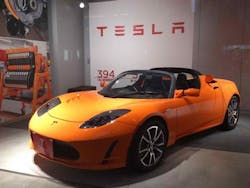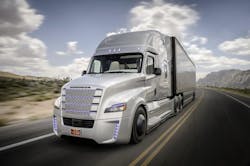A new report from consulting firm Navigant Research makes pretty startling prediction where self-driving vehicles are concerned.
The company projects that 129 million autonomous-capable vehicles will be sold during the 15 year period between 2020 and 2035, and if people get hip to sharing driverless cars, those numbers might be even higher.
“Sharing vehicles is one of the core benefits of an autonomous fleet, and if people are willing to share rides, then even greater efficiency can be achieved,” noted David Alexander, Navigant’s senior research analyst, in the report.
“Studies have shown that an autonomous fleet can effectively replace a muchlarger number of private vehicles in a city center, which represents both opportunity and challenge for original equipment manufacturers,” he added.
Yet will that veritable explosion of self-piloting vehicles really begin occurring just five years hence and in such large numbers? I’m not so sure, simply because I think it’ll take a far longer time period for humans to hand over the driving duties to their vehicles.
Take the experience of John Stossel with a super pricey self-piloting all-electric Tesla car for example. A veteran Fox Business reporter, Stossel related his conflicted feelings as he sat behind the wheel during his test drive.
“Actually, I didn’t do nothing. I hyperventilated. It’s not natural to sit passively while ‘driving’ at 65 mph,” he explained. “Once I learned how the car works, I found the driverless car pretty wonderful, although weird. It’s counterintuitive to trust a computer to handle a car’s sharp turns or stop-and-go traffic.”
[Watch Elon Musk show off the speed and self-driving capabilities of his Tesla from a Bloomberg test drive about a year and half ago.]
Stossel reiterated an often-highlighted statistic when the subject of “driverless cars” comes up: They are safer than one operated by human drivers are, because 94% of people killed in car crashes are killed because of human error.
Yet Stossel’s consternation at “doing nothing” (expect for hyperventilating, which is what I would do, too) with the Tesla in self-pilot mode reminds me of a similar issue confronting truck drivers placed behind the wheel of autonomous trucks; something discussed in detail last December during a two-day conference in Texas.
“The big challenge here is a driver faced with 10 hours of drive time sitting there doing nothing, yet still responsible for intervening at a moment’s notice if something goes wrong,” explained Stephan Keese, senior partner for the North American automotive practice at global consulting firm Roland Berger, during a presentation at that meeting.“So how do you keep them awake and attentive in such an environment? That can almost be more stressful than driving,” he said. “But driver acceptance is essential to making all of this work.”
Navigant’s Alexander adds another concern to the mix: accident liability.
“While improved safety and a reduction in accidents is one of the biggest benefits of autonomous driving, liability is a concern for many OEMs,” he said. “Claims that a vehicle itself caused damage or injury could be potentially ruinous for manufacturers,” though he stressed that legislation establishing that “liability rests with whomever activates a system” would encourage the launch and deployment of fully autonomous vehicles (AVs).
Yet that would seem to say the human “driver” remains at fault in an AV, despite their lack of control the vehicle. Fox’s Stossel found that out the hard way when his Tesla “bumped” the side of a tunnel, forcing him to re-take control of the car. Yet the reason the vehicle “bumped” the tunnel is that he nervously touched the wheel, and that led the machine to indicate he wanted to take control.
It’s “glitches” like that David Golden, Asst. VP-commercial lines policy for the Property Casualty Insurers Association of America (PCIAA) tried to draw attention to at last December’s conference on automated trucks.
“How will software respond to potential crash situations? We may have fewer accidents as a result [of autonomous technology] but they may be more expensive; we’ll be trading injury dollars for repair dollars, because there are a lot more expensive systems on these [autonomous] vehicles,” he said.
Just one of the many issues that’ll need to be worked out before AVs hit the road in any sizable numbers, I think.





